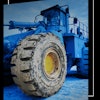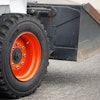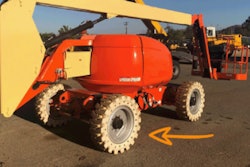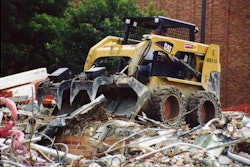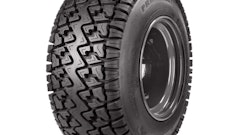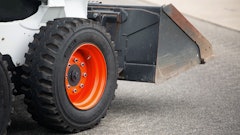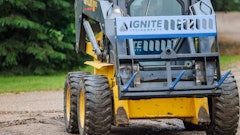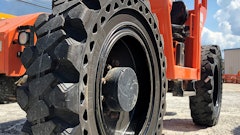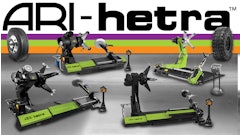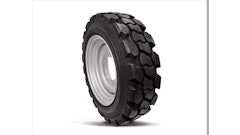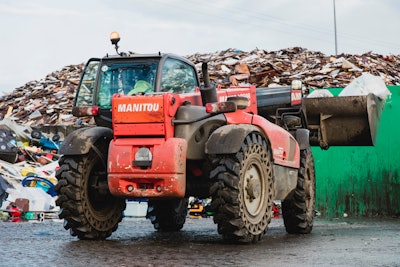
by Dominic Gosselin, Product Manager, Americas – Construction Tires
Are you the manager of a rental fleet? It doesn’t matter whether you’re the head of a large corporation with numerous franchises or the heart and soul behind a local rental shop: in both cases you’re well aware that downtime is the enemy of profitability and customer satisfaction. It can take a serious dent in your reputation when it starts showing up more often than it should.
Tires have a tremendous impact on machine performance, safety and uptime. But when you don’t know in what environment or on which surface type your machinery will be used, choosing the right tire for the application becomes a guessing game. Unlike scrapyard managers who know that their machines will be used in extreme conditions, rental managers aren’t always aware of how their machines will be used. And that’s one of the worries of being a rental. Since there is no one-size-fits-all solution, what can you do to ensure maximum uptime and make sure both your clients and wallet are happy?
Your tire dealer, your best ally and dedicated partner
Luckily, dealers are there to help you equip your machines with solutions that will ensure maximum uptime: their knowledge about the market and the complexities of the rental industry is a valuable asset that shouldn’t be overlooked. That’s why it’s important to choose a dedicated dealer who acts as your partner and advisor, and who offers a wide range of solutions to tackle all the challenges your customers will come upon. Furthermore, your dealer will be able to recommend the right solution to optimize machine performance, retain customers, and reduce your operating costs.
While the capacity, usage and size of the machines in your fleet vary, the challenges they’ll face in the field are quite similar: punctures leading to flats, premature tread wear, and traction issues are the most common ones. Let’s take the example of two common and versatile machines: skid steer loaders and telehandlers. Given their adaptability, they are the jack of all trades of the construction world, which is great for a rental because they are in high demand. However, their versatility also means that they’ll be used for any type of work, which adds to the complexity of choosing the right tire for the application.
Three key elements to look at when speaking with your dealer
1. Tire dimension
This may seem simple and obvious, but there are multiple equivalences for tire dimensions, which vary with machine size or make, as well as tire technology. This can easily become a headache for rentals, as your fleets count numerous different machines. Being well-informed is key to understand the nuances and equivalences in tire size for solids, bias and radials: it goes beyond the numbers on the tire sidewall and there are many factors to take into account.
2. Tread pattern
In today’s world, there’s such a wide selection of tread patterns available, it’s easy to get lost. While historically we’re used to seeing classic directional patterns, manufacturers now offer different tread designs in both directional and non-directional options. These can vary according to region, depending on the different or similar situations the tires will find themselves working in. Understanding the application is key to link to the right tread pattern. For example, some patterns have been developed to offer maximal soft surface traction, while others improve tire life on abrasive surfaces. Some are even built to offer a smooth ride that ensures best operator comfort. There are also more versatile patterns that work well all over, but these multi-purpose designs are not necessarily the best solution for all applications. Knowing your clients’ use case is essential when selecting the tread pattern: renting out a skid steer loader doesn’t automatically mean the application will require a traditional directional traction pattern.
3. Technology
You’re probably already familiar with them, but here’s an overview of the various and complementary tire technologies available for construction machinery:
- Solid tires offer the most robust solution, with puncture-free operations and ultimate resistance to chunking and cuts, proven stability and the longest tire life on the market. There are also different level of quality within solid tires. Some manufacturers even offer multiple levels of quality within their solid tire range.
- Pneumatic tires are without a doubt the lowest-priced solution upon purchase, but they may turn out to be pricey for rentals. It all depends on the applications, types of surface and about making sure to recommend the right machine with the right tires to your clients. Their biggest advantage over solids on skid steers and telehandlers is the operator’s comfort (and their price).
- Foam-filled pneumatics are quite popular amongst rentals given that their acquisition cost is normally lower than solids, while they offer improved puncture resistance for flat-free operations. They can be seen as an insurance policy for pneumatics: they’ll perform better than pneumatics in tough conditions, but they won’t last like solids in extreme applications.
- Tracks are a complementary technology to take into account, especially if your fleet includes mini-excavators and compact track loaders. Tracks have been on the rise for already several years. A proof of that is that since 2016 there are more new compact track loaders sold than skid steer loaders.
Other relevant factors to consider in tire selection
What is your business’ tolerance to downtime, or what is the level of risk your business is able to cope with? This may influence the technology your dealer will recommend (solid vs. pneumatic).
What are your clients’ needs? Are they working on soft surfaces where they’ll require a lot of traction, or are they working indoors, protected from bad weather on clean and dry surfaces? Your dealer will recommend a pattern that matches your clients’ requirements. If you’re not sure about your clients’ specific applications, versatile solutions for mixed surfaces may be your best option.
How old is your machine / where is it in its lifecycle? In early life, investing in a long-lasting solution is worth it and will provide a lower operating cost for your machine (better return on investment). On the other hand, if you’ll soon be retiring the machine from your fleet, you may want to consider a solution that offers performance, but at a lower cost (for example a mid-range solid or foam-filled pneumatic versus a premium solid).
At the end of the day, remember that your dealer is the best partner to answer your questions and point you towards the right solution for your fleet: they have a global vision that will take into account the different variables in the equation.
Camso offers a wide range of construction solutions that have been engineered to meet the challenges of the rental industry. Its technologies include solids, pneumatics (including foam-filled) and tracks. The brand new Camso TLH 592S, a mid-range solid tire for telehandlers, extends our rental-specific offering.
For more information, visit camso.co.

